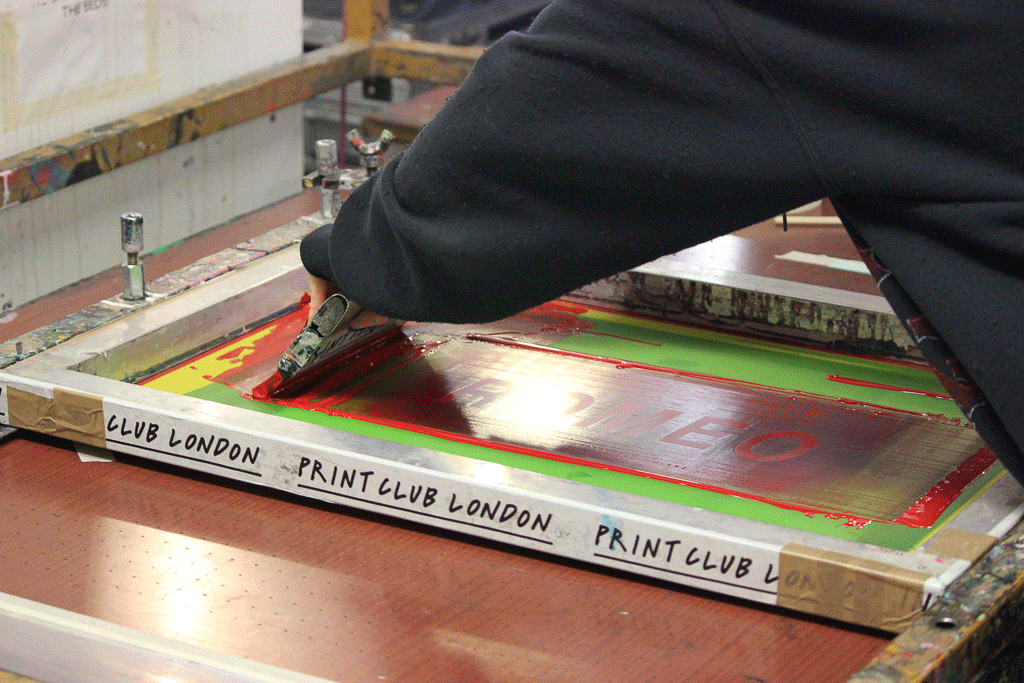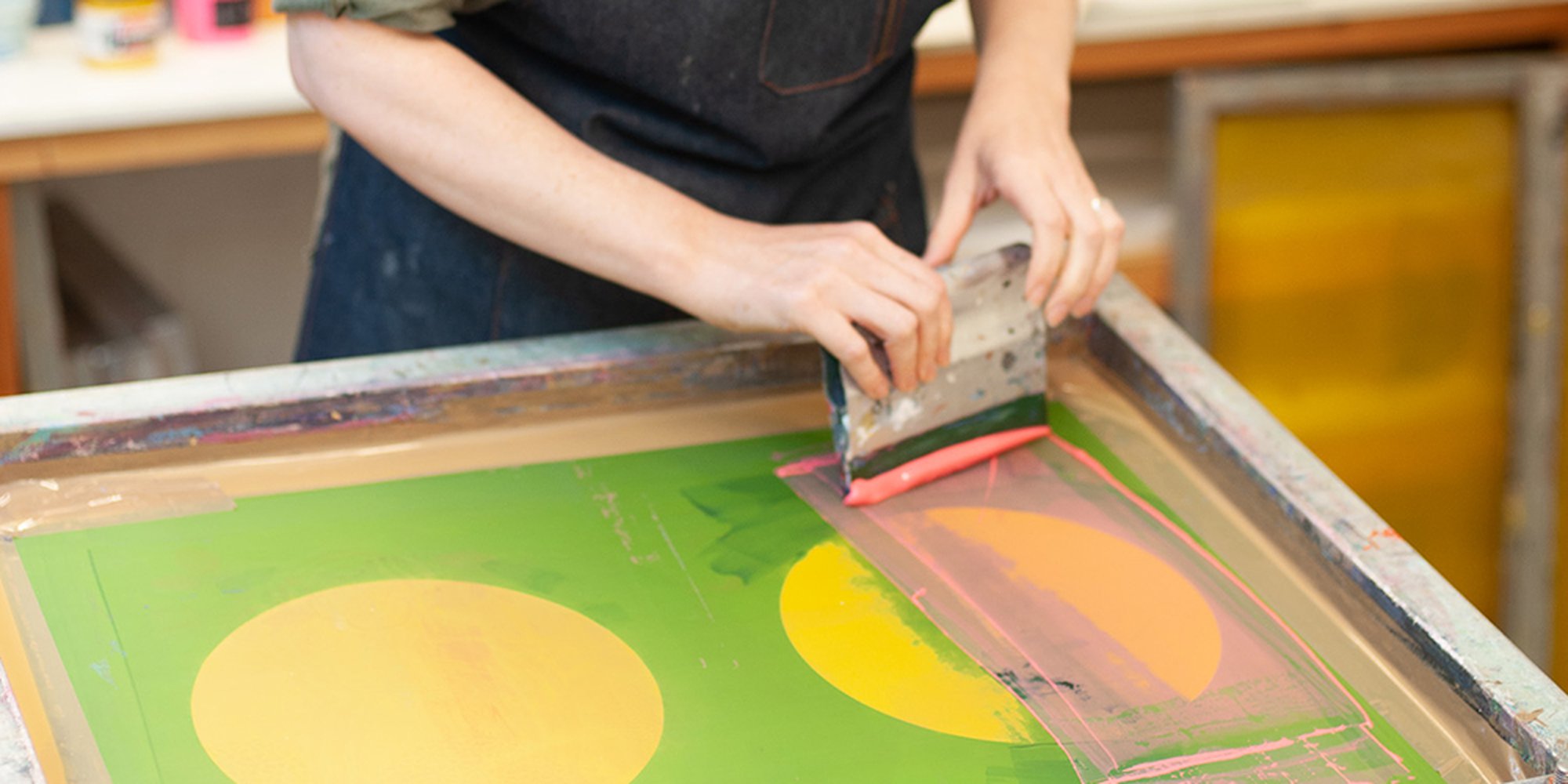ChatGPT said: The perks of working with 10:9 Design Embroidery for branding
The Essential Guide to Recognizing Screen Printing and Its Versatile Utilizes
Screen printing has an abundant history that goes back to ancient times, progressing right into a sophisticated strategy used across numerous industries today. This overview discovers the ins and outs of the screen printing procedure, outlining its applications in home, fashion, and advertising design - 10:9 Design Screen Printing. Comprehending these fundamentals can open up imaginative potential for both imaginative and commercial jobs. The adhering to areas will certainly disclose important ideas and strategies to boost one's screen printing undertakings
The Background of Screen Printing
Screen printing has roots that trace back centuries, its advancement mirrors the artistic and technical improvements of different cultures. Coming from old China, the strategy was originally made use of for embellishing fabrics and later spread to Japan, where it became indispensable to Ukiyo-e woodblock printing. The method shifted to Europe in the 18th century, where it acquired popularity amongst craftsmens and business printers. The invention of picture emulsion in the 20th century changed screen printing, enabling more complex designs and better effectiveness. Musicians like Andy Warhol better drove its appeal, utilizing the tool to produce famous works that mixed commercialism and art. By the late 20th century, screen printing had developed itself as a flexible strategy, utilized in vogue, advertising and marketing, and art. Today, it remains to evolve, incorporating electronic innovation and increasing its applications across numerous industries.
The Screen Printing Process Explained
Screen printing changes artistic visions right into tangible styles via a series of exact actions. Initially, a picture is developed and then moved onto a screen, usually constructed from fine mesh material extended over a frame. A light-sensitive solution is put on the screen, which is exposed to light, solidifying in areas not covered by the picture. After washing out the unhardened emulsion, a pattern is created.
Next, the screen is put over the substratum, whether it be material, paper, or an additional material. Ink is after that pressed through the open locations of the stencil making use of a squeegee, transferring the layout onto the substratum below. This process can be repeated for several colors, needing separate screens for every color. The printed item is cured using warmth to assure the ink sticks properly, resulting in a long lasting, vivid style ready for use.
Kinds of Screen Printing Techniques

In addition, specialized techniques, such as discharge screen printing, get rid of color from the fabric to create softer prints, while aluminum foil screen printing applies metal aluminum foil to attain a glossy coating (10:9 Design near me). Each strategy uses unique features, providing to different creative demands and manufacturing scales, inevitably expanding the possibilities within the screen printing domain
Applications of Screen Printing in Various Industries

Furthermore, the signage and marketing markets utilize screen printing for developing attractive screens and banners. This approach permits for strong shades and intricate styles that catch interest. In electronic devices, screen printing is used for using conductive inks to circuit boards, vital for element links. The home design industry embraces screen printing to produce distinctive designs on textiles and wall art. Overall, screen printing functions as a vital tool across diverse fields, enhancing products with personalized and visually appealing graphics.
Tips for Successful Screen Printing Projects
While carrying out a screen printing job, cautious interest to detail can substantially enhance the last end result. Choosing top notch products is necessary; this includes the screen, inks, and substrates. Utilizing appropriate mesh matters can affect ink deposition and detail resolution. Preparation is just as important; extensive cleansing of displays and correct direct exposure times guarantee crisp prints.
Next off, precise registration is crucial for multi-color prints. Utilizing placement tools can help attain exact layering. Furthermore, testing prints on scrap products prior to production aids recognize prospective issues without wasting resources.

Frequently Asked Concerns
What Materials Are Finest for Screen Printing on Fabric?
Cotton and polyester blends are suitable for screen printing on fabric as a result of their sturdiness and ink absorption. Additionally, specialized fabrics like silk or canvas can generate unique appearances and finishes, boosting the overall layout high quality.
How Do I Tidy and Maintain Screen Printing Equipment?
To keep and clean up screen printing tools, one must on a regular basis wash screens with appropriate solvents, check squeegees for wear, oil moving parts, and shop all products in a dry, dust-free atmosphere to prolong their life-span.
What Are the Ecological Impacts of Screen Printing?
Screen printing can have substantial environmental influences, consisting of chemical waste from solvents and inks, water usage throughout cleaning procedures, and power consumption. Lasting practices and eco-friendly products are essential for reducing these adverse results.
Can Screen Printing Be Done in your home Properly?
Screen printing can be efficiently done at home with the ideal materials and strategies. Enthusiasts can develop top quality prints, though success depends upon their skill degree, devices, and understanding of the procedure entailed.
What Are the Prices Associated With Beginning a Display Printing Service?

Starting a screen printing business includes costs for tools, products, and office. Initial expenditures commonly vary from a couple of hundred to several thousand bucks, depending upon the scale, top quality of equipment, and desired production ability.
Screen printing has a rich background that dates back to ancient times, developing right into an sign and banner printing near me innovative strategy utilized across numerous sectors today. An additional technique, rotating screen printing, utilizes round screens, helping with continuous printing on textile rolls, therefore enhancing performance for massive manufacturings. In addition, specialized methods, such as discharge screen printing, remove color from the fabric to produce softer prints, while aluminum foil screen printing applies metal foil to accomplish a glossy coating. In the fashion industry, screen printing is commonly made use of to create dynamic styles on garments, enabling brands to display their one-of-a-kind designs. Cotton and polyester blends are optimal for screen printing on textile due to their resilience and ink absorption.